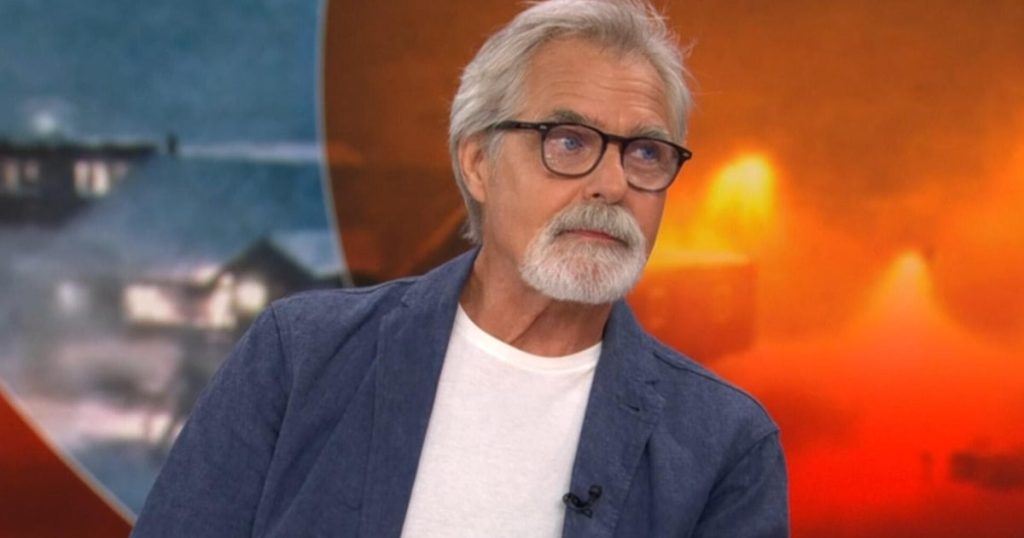Canadian actor Henry Czerny has made a significant return to the “Mission: Impossible” franchise after more than two decades. Reprising his role as CIA director Eugene Kittridge, Czerny depicts a morally complex character in the upcoming film, Mission: Impossible — The Final Reckoning. As this latest installment prepares for its release, the actor reflects on the evolution of his character and the intricacies of storytelling within the franchise.
| Article Subheadings |
|---|
| 1) A Return to a Complex Character |
| 2) The Actor’s Dual Life |
| 3) Evolution in Acting Philosophy |
| 4) Depth Beyond Villainy |
| 5) The Anticipation of the Franchise’s Conclusion |
A Return to a Complex Character
In the new film, Mission: Impossible — The Final Reckoning, Henry Czerny returns to a role that first made waves in 1996. His character, Eugene Kittridge, initially appeared as a foil to Tom Cruise’s character, Ethan Hunt. A morally ambiguous figure, Kittridge serves not just as an antagonist but as a mirror reflecting strengths and weaknesses that resonate with the audience. “If you were in their shoes, you’d kind of go, ‘Yeah, exactly. Well, actually, you know what? He’s got a point,'” Czerny noted. This nuanced portrayal is significant in the context of action films, which often trade complexity for simple good versus evil tropes.
The Actor’s Dual Life
Outside of his cinematic endeavors, Henry Czerny lives a life filled with creativity. As a dedicated weekend bongo player and woodworker, he contrasts sharply with the intense and often morally dubious character of Kittridge. Preparing for a role like Kittridge requires a deep dive into understanding the character’s psyche, Cuerny explained. “You read it, you imagine what this person has gone through,” he stated. This mental exercise not only aids his performance but also contributes to his personal growth, as he connects aspects of his own life with the character’s complexities.
Evolution in Acting Philosophy
Many artists undergo existential transformations, and Czerny is no exception. Describing himself as a young actor eager to ‘get it right,’ he emphasized how experiences over the years have reshaped his approach to acting. “As a young actor, you want to get it right. And over the years, you realize, you know, pack up the instrument and get the heck out of the way when somebody calls action,” Czerny noted. This evolution signifies a maturing perspective on the performance art, particularly in collaborative environments where creative synergy plays a vital role.
Depth Beyond Villainy
One of the standout aspects of the recent iterations of the “Mission: Impossible” franchise is the layered portrayal of antagonist characters. Czerny has praised the writers for granting depth and complexity to roles that could easily fall into cliché villain archetypes. “They give people weight, they give people dimension as opposed to ‘you need to grimace at him because he’s got to be the guy that wins the day,'” he stated, highlighting the trend that enables characters to be multifaceted. This new direction enriches the narrative, providing audiences with engaging conflicts that resonate more profoundly.
The Anticipation of the Franchise’s Conclusion
As the franchise reaches its climax, the stakes have never been higher for both characters and audience members. Executive producers and the creative team have crafted a narrative that promises to explore unresolved questions and rivalries within the series. Czerny suggests that audiences are in for an exhilarating ride as they see Kittridge navigate treacherous waters filled with intrigue and betrayal. “They ask you to come back and we’re going to have another look at that character after he’s been through a whole bunch of stuff,” he reflected, encapsulating the anticipation for this final chapter in a multi-decade saga. The film promises not just action, but an emotional journey that brings forth personal reflections and existential musings.
| No. | Key Points |
|---|---|
| 1 | Czerny portrays a morally ambiguous character, giving depth to traditional villain roles. |
| 2 | He emphasizes the contrast between his off-screen persona and his intense on-screen character. |
| 3 | Czerny has evolved in his acting approach, valuing collaboration over mere performance. |
| 4 | The franchise has shifted towards multidimensional characters rather than simple antagonists. |
| 5 | The upcoming film promises to answer lingering questions as the franchise nears its conclusion. |
Summary
With the release of Mission: Impossible — The Final Reckoning, Henry Czerny embarks on a compelling journey back to his character Eugene Kittridge. A character that represents more than merely a roadblock for Ethan Hunt, Kittridge embodies themes of moral ambiguity and personal reflection. The film not only promises action but also aims for emotional depth that will engage audiences as the franchise concludes its decades-long saga.
Frequently Asked Questions
Question: What is Mission: Impossible — The Final Reckoning about?
This film is the latest installment in the “Mission: Impossible” franchise, focusing on CIA director Eugene Kittridge and Ethan Hunt’s complex relationship as they navigate new dangers.
Question: How does Henry Czerny prepare for his character?
Czerny immerses himself in understanding the character’s life experiences, drawing parallels with his own to create a multifaceted performance.
Question: What themes are explored in the film?
The film delves into morality, complexity in character relationships, and personal growth, highlighting the challenges faced by its protagonists.
